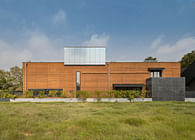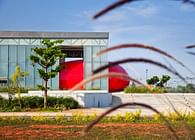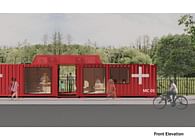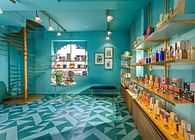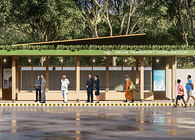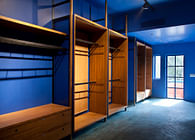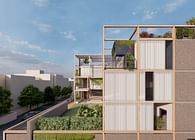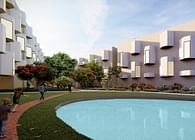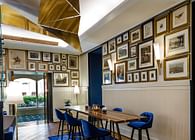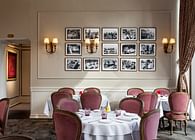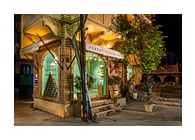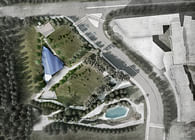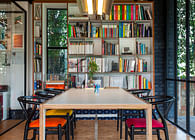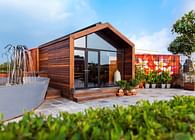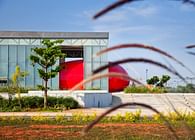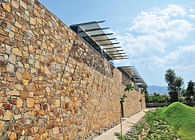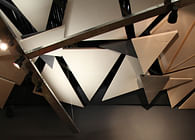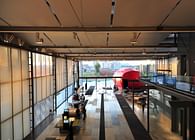
New Delhi, IN
The Postcard Hotels – Cuelim
Set amidst the quaint locales of Goa, the Postcard Hotels are spread across three different estates, each conceptualised with architectural experiences that are transformative in nature. The key intent of developing the hotels was to do away with a matchbox and pre-packaged approach towards hospitality. Hence, locations and structures that had the potential to be transformed into holistic luxurious experiences - in terms of air, light and space, were identified for this sisterhood development. The locations have therefore been identified on the basis of a constructive history, clear architecture expression and a potential of being restored.
The design was developed with the intent to conserve, preserve, restore and regenerate, while adding a contemporary experiential layer of functionality. Overall, the hotels were conceptualised to meet performance benchmarks, without exploiting consumption standards of materials and energy.
The first hotel is developed in the picturesque village of Moira, on a 214-year-old, restored ancestral home on the Birdsong Estate. In order to re-establish the spatial experience of the villa back to its former glory, the design focuses on crafting vistas with reference to scale and space. These vistas are exaggerated in spatial manifestation, whilst the materiality and detailing ensue light and ventilation. The tropical climatic conditions would not allow for overall daylight penetration; and thereby to overcome this, the dark spaces within the villa have been identified and opened up to bring in sufficient air and light while keeping the heat ingress out.
The entrance is lined with a striking bougainvillea field that further leads the visitor into a central courtyard, whose floor is laid with slabs of a local stone – tandur. While these slabs act as an architectural grid to create a sense of order, they also allow for flowers and plants to peep from within. The courtyard steers the guests into the villa, where the original verandahs have been restored and tainted dark in order to focus one’s view. An amalgam of colour, views, vistas amidst lush landscape is crafted by means of local materials such as cuddapah stone, IPS - for flooring, hand-painted frescos and textured walls. Local crafts as well as industry leaders have both been brought in to conceptualise and craft custom-finishes and furnishes. Laid-back chairs made of dark teakwood that is inlayed with brass, endow the interiors an edgy caress. An existing swimming pool is lined with a waterfall that is crafted from cut, sleek bamboo and is marked with tiles. A mix of new and old, found objects dot the interior spaces such as the 100-year-old, four-poster bed in the suite. Wherever the existing furniture did not conform to the desired standards of comfort, new bespoke furniture has been designed and created. Inspired from Goan history and the feel of an ‘Indo-Saracenic meets Portuguese’ expression, the interiors are old with a contemporary twist. The Goan tradition of having a well in each house has been imbibed, with the newly-painted purple well that is adorened with a gold planter, becoming the focal point of the hotel making the Postcard Moira is a heavily composed experience.
The second hotel, The Postcard Velha is located in Old (Velha) Goa, on the Champakali Estate. With an exquisite setting that brings the visitor amidst the Himalayas, the property had great potential in terms of restoration. The studio has engaged in the restoration, technical engineering and recomposing of the landscape for the hotel. By virtue of its setting – surrounded by lush green trees, the design process became all about the creation of an externalized experience, alongwith a challenge to moderate, control and doctor the internal spaces. Post the cleaning up of the spaces for basic hygiene and elevating the internal finishes, planning strategies facilitate the view of the landscape and lighting outside. The landscape has been recomposed in order to control the views and apertures from within the spaces. Lime, laterite, IPS and a muted colour palette further encourage a meditative and tranquil experience. The only colours in the entire space can be seen on the IPS floor, which is inlaid with different colours of metal. The furniture in the spaces comes together from diverse found objects.
Hotel number three lies on a historic site that belongs to a freedom fighter, in the neighbourhood of Cuelim. Home to two ancient chapels – one 100-year-old and the other, a 200-year-old one, the property is the oldest of the three. As a result, the designed hotel is also preserved to be the oldest of the three, offering an authentic, old Goa experience. The Postcard Cuelim boasts of disproportionately large spaces; from massive bedrooms, one steps into even larger public areas. The scale of the public spaces emphasizes the historicity and authenticity of ancient Goan homes and therefore designed to provide for a multitude of activities, gatherings and celebrations simultaneously. Most of the inherited furniture from the estate has been reconditioned, repurposed, preserved and restored in some form or the other, crafting a heritage-inspired, authentic experience that is not composed, but curated.
Status: Built
Location: Goa, IN

